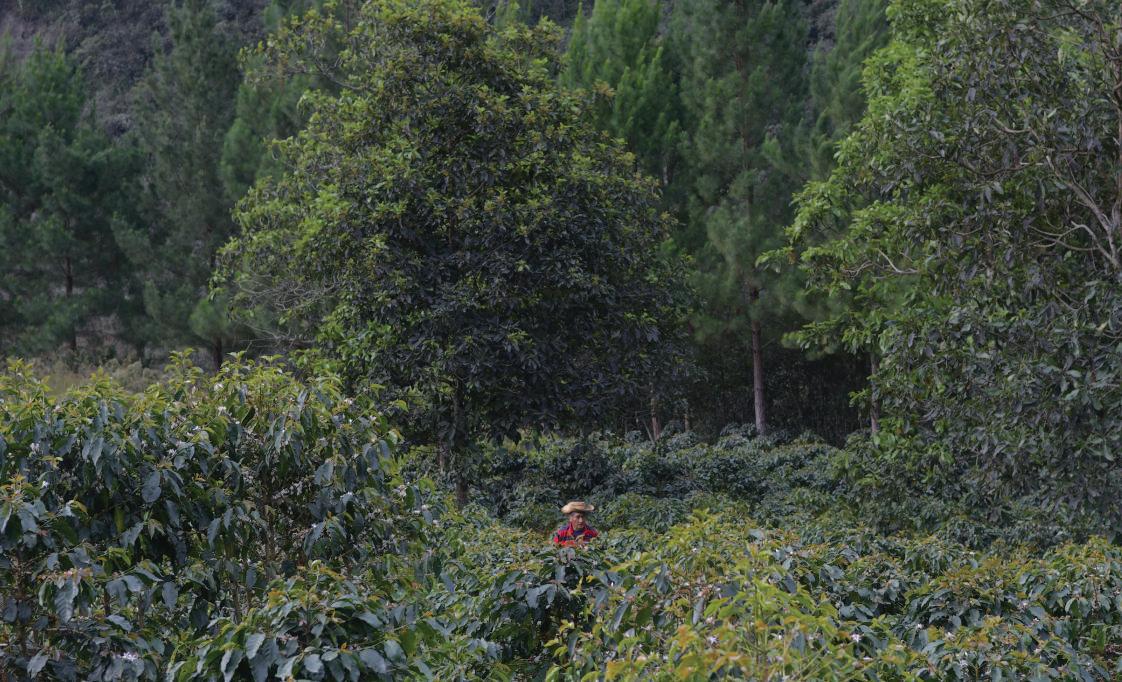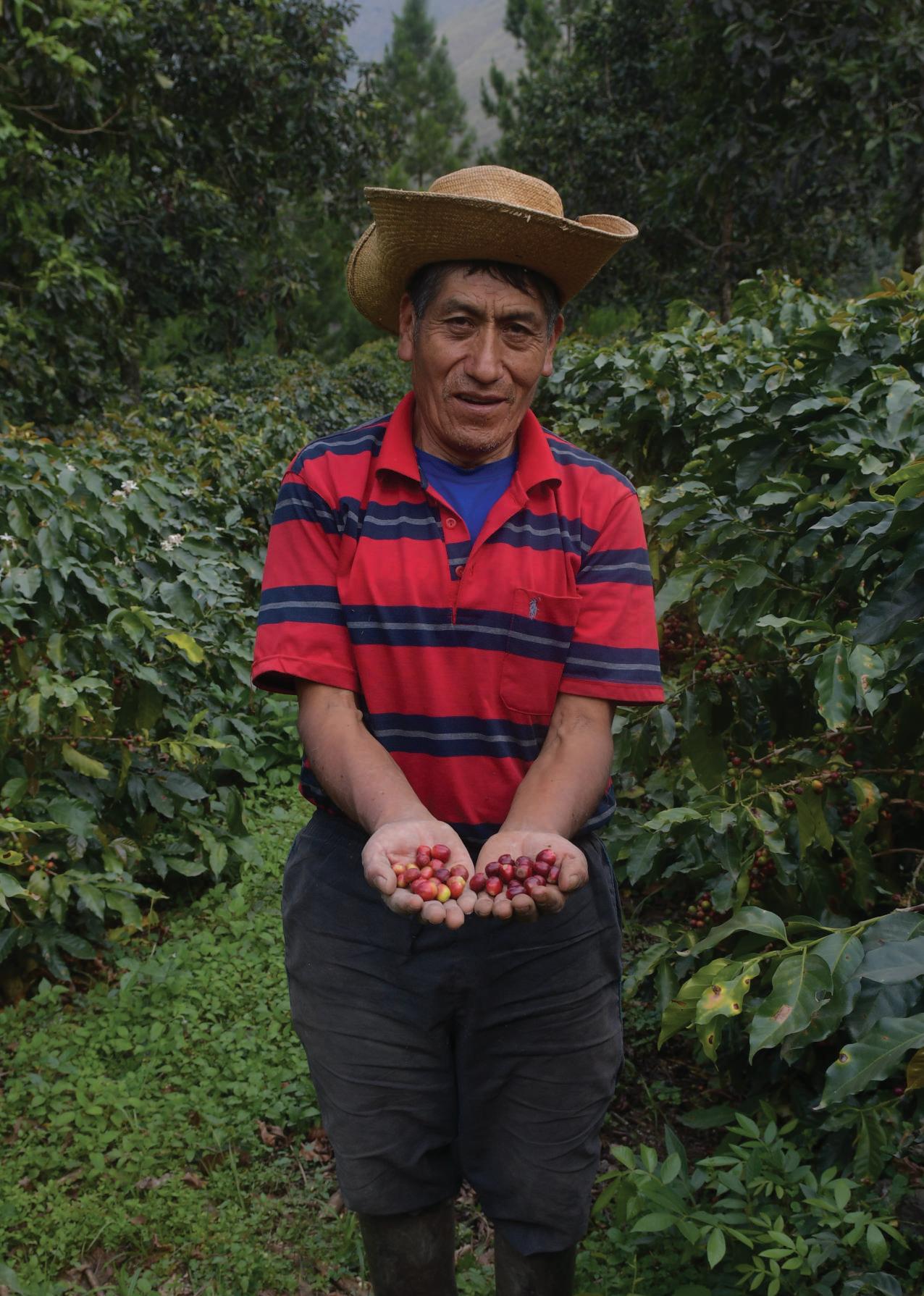
4 minute read
Loyola Escamilo on Preserving the Amazon
While in Puno, we had the opportunity to speak with Loyola Escamilo from the Wildlife Conservation Society (WCS), a global organisation founded in 1895 and operating in around 60 countries. We asked about WCS’s activities in Peru, particularly in coffee-growing regions. Loyola, Director of the MadidiTambopata Landscape in Puno, shared insights about her role and the organisation’s work.
WCS is committed to conserving natural landscapes, particularly in coffee-producing regions like Puno. Their work involves gathering and studying biological information about ecosystems, implementing conservation strategies, and fostering partnerships with local and international organisations. A key focus is integrating wildlife conservation in the coffee production areas, ensuring a harmonious balance between agricultural practices and nature preservation. Since 1968, their efforts in Peru have concentrated on three key areas:
Advertisement
-> Management of Protected Areas
-> Conservation of Amazonian Waters
-> Preservation of Various Species
Their work primarily spans two major regions: in the North, initiatives are centred in Loreto, while in the South, their focus is on the Sandia region in Puno, including the Tambopata valleys, and extends to the Madre de Dios region, located in the southern part of the Peruvian Amazon.
Shared values
In Puno, they are preserving biodiversity by integrating territory management using a basin approach. This basin approach involves treating the entire river basin as a cohesive ecological entity, interlinking various facets of river basin usage including water dynamics and human activities. The aim is to provide long term effective management to create a sustainable livelihood for the locals living in the protected areas. Recognising that each action effects both upstream and downstream regions, this approach delivers collaborative efforts among diverse groups to safeguard their environment. Such a strategy has proven successful in tackling complex ecological issues like water scarcity, pollution, habitat destruction, and loss of biodiversity.
The Sandia province where the conservation is taking place is a renowned area for coffee production, with all of Puno’s coffee coming from its intricate network of valleys. These valleys, amidst a backdrop of both biological and cultural wealth, connect the Andes to the Yungas’ fog forests, embodying the rich heritage of the Quechua and Aymara communities.
Beneath these valleys lie the Bahuaja Sonene National Park and the Tambopata National Reserve, both acclaimed for their ecological importance. The region boasts a diverse biosphere, with fog forests enveloping 78% of the area and providing habitat to species like the Andean bear (spectacled bear), pumas, jaguars, red deer, and various monkeys and birds, including the cock-of-the-rock. The flora is equally diverse, featuring plants like quinoa and walnut.
How WCS work with coffee
WCS collaborates with specialty coffee growers in Sandia to enhance the coffee value chain, connecting sustainable producers with buyers, roasters, and consumers who prioritise high-quality coffee that contributes to the conservation of the Amazon.
They partner with residents in conservation areas, helping them obtain premium prices for their coffee. WCS is committed to preventing further destruction of the Amazon. A key strategy is fostering conservation agreements with coffee-growing families, aimed at improving both the quality and yield of their crops. In exchange? Their commitment to forest preservation and biodiversity conservation. The idea is that if these families gain access to buyers willing to pay premium prices, they’ll continue to implement sustainable practices.
The experience of Loyola
Loyola has been with WCS since 2015. Before this, she was involved in various projects across the Amazon in Puno and Madre de Dios. Her role included managing teams in these areas and serving as the director of the Madidi Tambopata landscape.
Her current responsibilities involve leading interventions in this region by designing and monitoring conservation strategies, as well as coordinating and establishing collaborative relationships with various stakeholders who reside in and impact the area. Snapshot of WCS Impact in Puno:
-> Conservation Agreements: 70 with Quechua and Aymara families in the Sandia Valleys
-> Community Involvement: Involves around 280 people, with women leading 12 families
-> Preserved Forest Area: 550 hectares
-> Sustainable Coffee Plantations: 82 hectares under sustainable management
-> Productivity Increase: Annual average increase of 2530% in productivity
The challenges ahead
The primary challenges threatening both biodiversity and successful coffee farming in the Sandia valleys are closely connected. The most pressing concerns include the proliferation of illegal gold mining, the construction of unplanned roads, and the adoption of short-term, profitable, yet unsustainable agricultural practices. In terms of coffee cultivation specifically, a key hurdle is enhancing productivity, which suffered a sharp decline due to severe leaf rust and pest infestations in recent years. Recovery has been slow, hampered by insufficient technical guidance, lack of investment in land management, reduced productivity, suboptimal post-harvest processes, and organisational issues within coffee cooperatives and associations.
The potential of Puno
In the Sandia valleys of Puno, despite facing challenges like illegal gold mining and the threat of deforestation, local Quechua and Aymara communities are producing some of the world’s finest organic and fair trade coffee, with quality ratings often exceeding SCA 84, and sometimes reaching as high as SCA 90. This coffee cultivation not only enhances the quality of life for these families but also plays a crucial role in conserving the region’s biodiversity and preventing any more deforestation in the Amazon of Puno.
However, increasing the sustainability of coffee production is a significant challenge. The goal is to raise productivity from the current 10-15 quintals (46kg bags) per hectare to at least 40 quintals, without expanding into new forest areas. Achieving this requires better soil and plantation management, along with financial resources for inputs and labour, which are presently lacking due to low productivity levels.
Thus, developing viable financing mechanisms and strengthening the organisation of coffee cooperatives and associations are essential. Moreover, the role of responsible consumers and companies is vital. By supporting deforestation-free coffee cultivation and ensuring fair pricing, they can help make coffee farming sustainable, improve livelihoods, and serve as defiant stewards against deforestation in the Amazon of Puno and the Bahuaja Sonene National Park.









